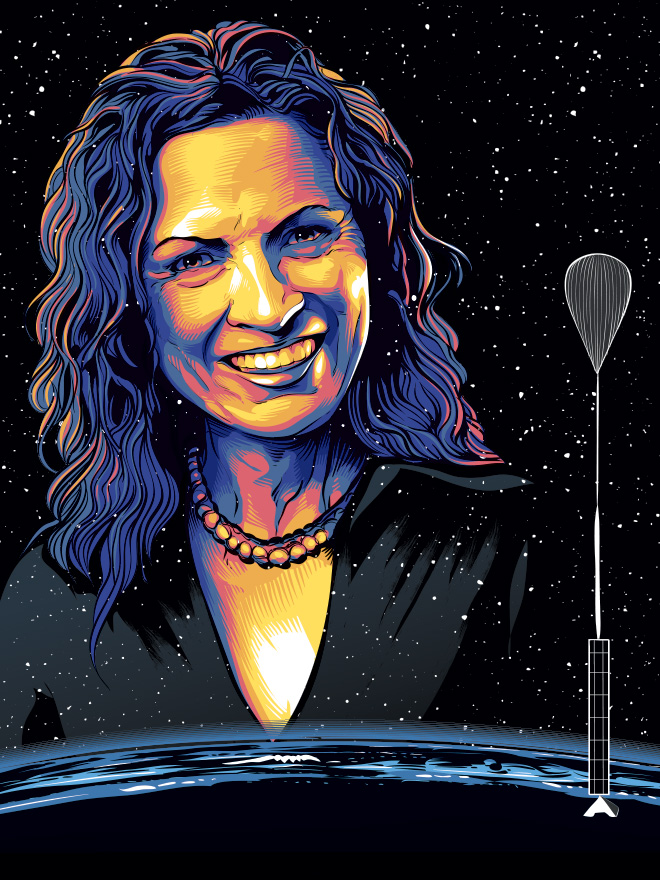


Nothing draws attention to your new product like using it to send fast food into space. In June, Arizona-based World View demonstrated the potential of its pioneering stratollite—a sort of mini satellite that uses a high-altitude balloon to take payloads into the stratosphere—by partnering with KFC to ferry a 5-ounce piece of fried fowl 77,000 feet into the desert sky. “We took a frail chicken sandwich, launched it into space for 17 hours, and when it came back, it was perfect,” says World View CEO Jane Poynter. Poynter’s ultimate goal is to send tourists to the edge of space, tethered to the company’s balloons, and to make the final frontier more accessible for research. Stratollites are inexpensive, compact, and highly maneuverable, ideal for monitoring weather patterns and providing military reconnaissance or emergency communications during natural disasters. They can also do what traditional satellites can’t: spend months stationary above a specific location. Though Poynter did not formally train as an engineer, she has spent her career in trailblazing space research. The British native honed her skills as a technical manager while part of Biosphere 2, an Arizona research facility built to test a self-enclosed, self-sufficient ecosystem. Its creators hoped it could one day be adapted for use in space. She spent two years in the early 1990s sealed inside with seven others, experiencing everything from oxygen failures to colleagues’ emotional breakdowns. Poynter met her future husband, Taber MacCallum, on the project, and afterward, the couple formed Paragon Space Development. They began devising miniature biospheres that could support plant and animal life in orbit. The tiny habitats bore daphnia, a water flea, and ostracods, small crustaceans, which Paragon placed aboard Mir and the International Space Station. There they bred multiple generations, the first to do so in space. “We showed it’s possible for animals to thrive in an environment they are not used to: microgravity,” Poynter says.
In 2014, Poynter and MacCallum achieved another high-altitude first. They led the engineering team that helped former Google exec Alan Eustace skydive from the edge of the stratosphere. That’s when it hit them: The balloon-parachute system they designed for Eustace could be modified for tourism and research. So they formed World View, with MacCallum serving as chief technical officer.
The company has a contract with NASA to determine if the system could someday be used to gather data on Mars. “Taking stratollites and flying them on other planets,” Poynter says, “that’s definitely a component of the big dream.”
This was originally published in the November/December 2017 issue of Popular Science. This way for more from our 30th annual Best of What’s New issue.